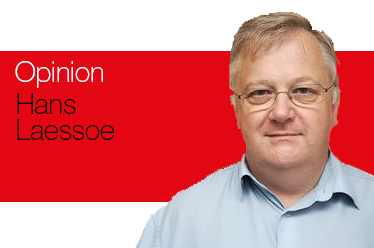Dean Kong, head of risk (AGM) for the Changi East megaproject – the development of a new passenger terminal to Singapore’s Changi Airport, tells StrategicRISK about the risk challenges of megaprojects
If you study the failure of megaprojects around the world, you will see that the drivers of risks often relate to poor planning, wrong assumptions and designs that failed to consider the challenges during the construction, operations and the maintenance phase.
Therefore it’s crucial for risk thinking to be embedded right from the start so that risks can be systematically identified in good time and addressed. For this to work, one has to understand that there is a limitation in the types and amount of risks that you can transfer to the project’s designers or contractors. At the end of the day, we, as the ultimate risk owners, will have to choose between investing our resources upstream to manage the risks or paying the price downstream when these risks materialize into real issues and problems.
RISK IS A DRIVING FACTOR IN THE DESIGN
At Changi Airport, we consider both upside and downside risks. For example, we walk through the designs of various passenger touchpoints with their experience in mind. This translates to design improvements on passenger flow, the layout of retail shops and the introduction of natural light to our terminals. Such enhancements capture the upside risks that lead to the ‘positively surprising Changi Experience’ that we strive to deliver to all travellers and visitors.
On the other hand, we need to also manage our downside risks. For example, we need to review the designs that protect our critical systems and think through each scenario of system failure and how we can prevent failure or respond more efficiently and effectively through better design.
THE LIFECYCLE AND CHALLENGES OF A MEGAPROJECT
The lifecycle of a project typically rolls from the planning phase into the various stages of the design phase before it goes into the construction and commissioning phase. Our challenge is to manage multiple projects that are all progressing at different phases and timelines but ultimately interfacing into one mega project.
This megaproject brings along the challenges of stakeholder risks, funding risks, regulatory risks, supply chain risks, interface risks, technological risks – the list goes on, but all on a mega scale.
We set up a risk management framework and structure that enable us to increase both the risk awareness and risk management capabilities of our colleagues (who are the risk owners and risk control owners) so as to identify and manage risks more effectively and with timeliness. For example, we collate and send out risk headlines on a daily basis so that we all become more aware of the risks from other similar projects and we can learn from their mistakes.
We conduct risk onboarding and training for our colleagues, consultants and contractors so that we can be more transparent in discussing risks and more collaborative in addressing them. We conduct monthly risk meetings and regular risk workshops in order
to identify and address risks in a more timely and effective manner. We communicate risks and expected controls in our tender documents so that contractors and partners are more prepared to address the inherent risks and price them accordingly.
AFFIRMING OUR FOCUS ON RISK
CAG has always taken risk management seriously because the failure to prevent a risk or any lag in responding to incidents can impact us significantly. Winning this award affirms our focus and collective efforts of the various stakeholders in weaving risk management mindset into our projects.




















No comments yet